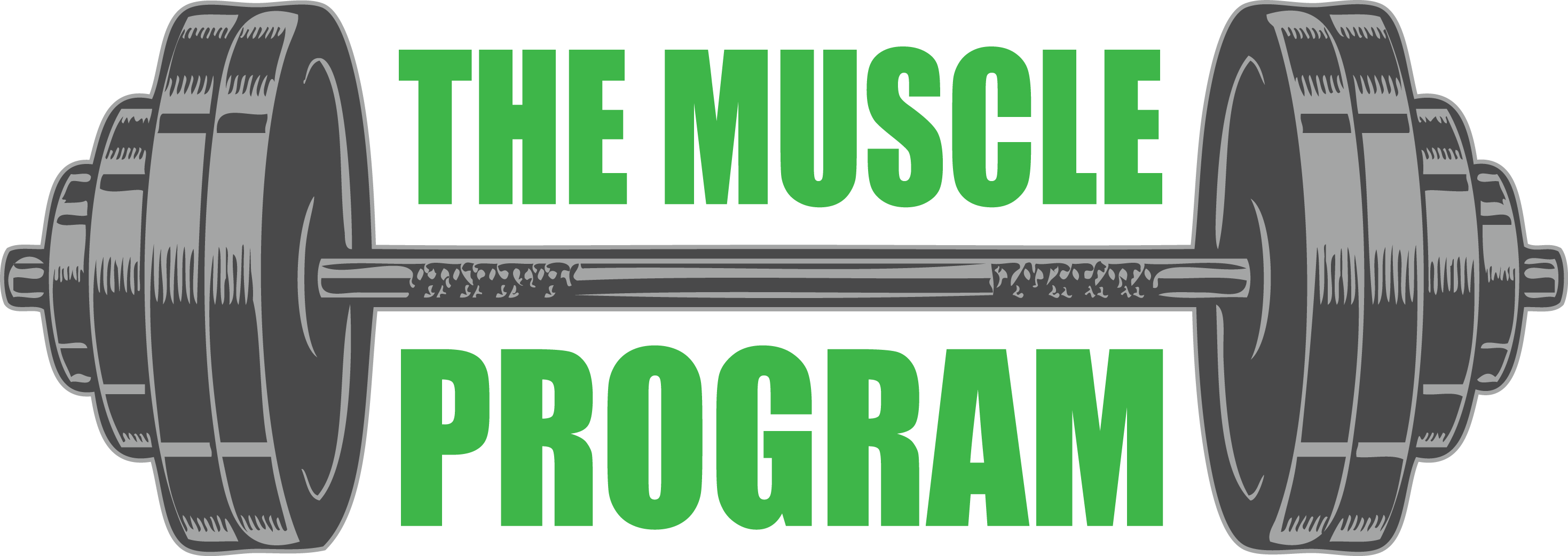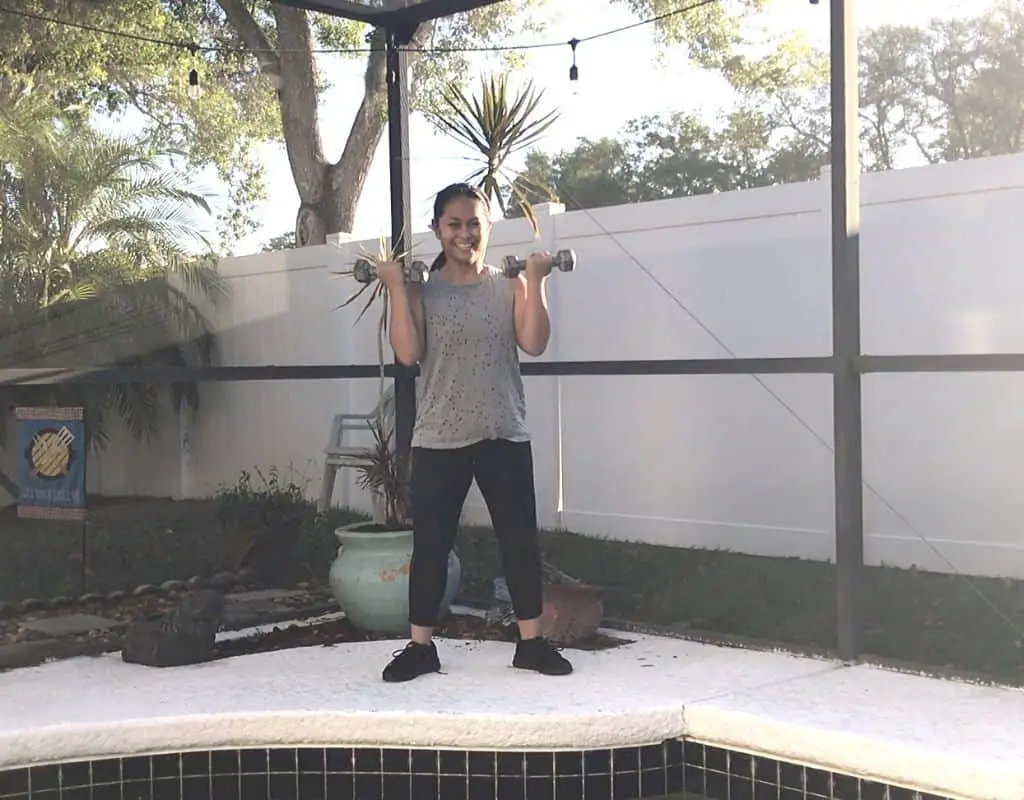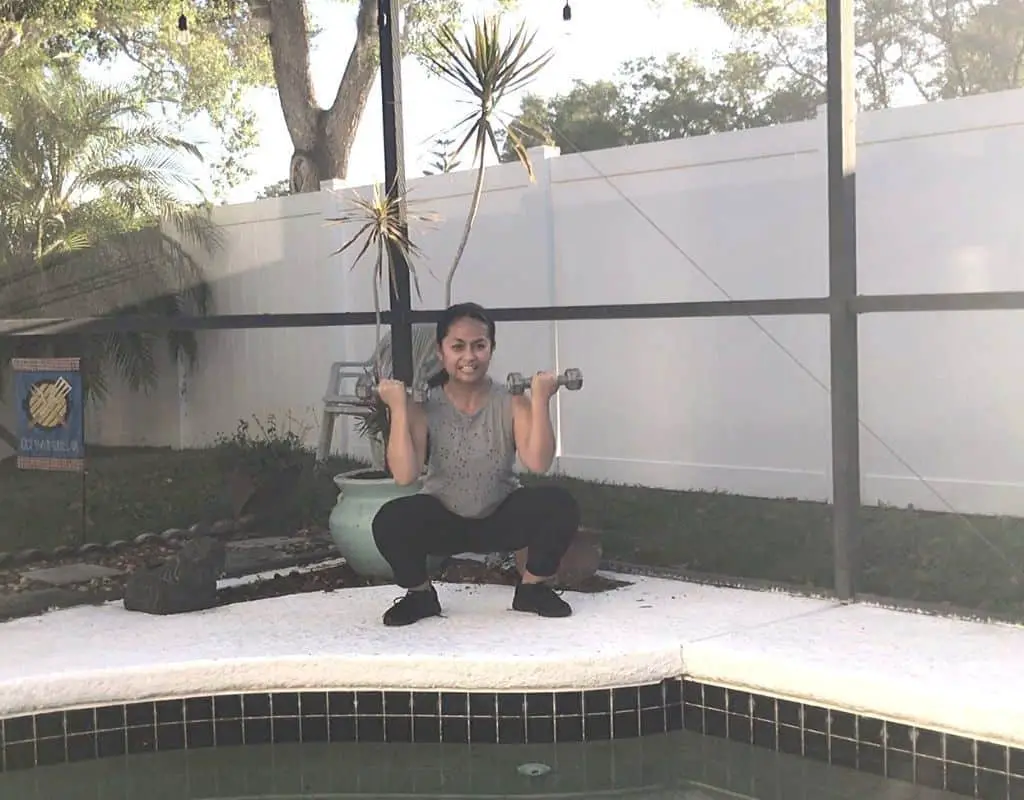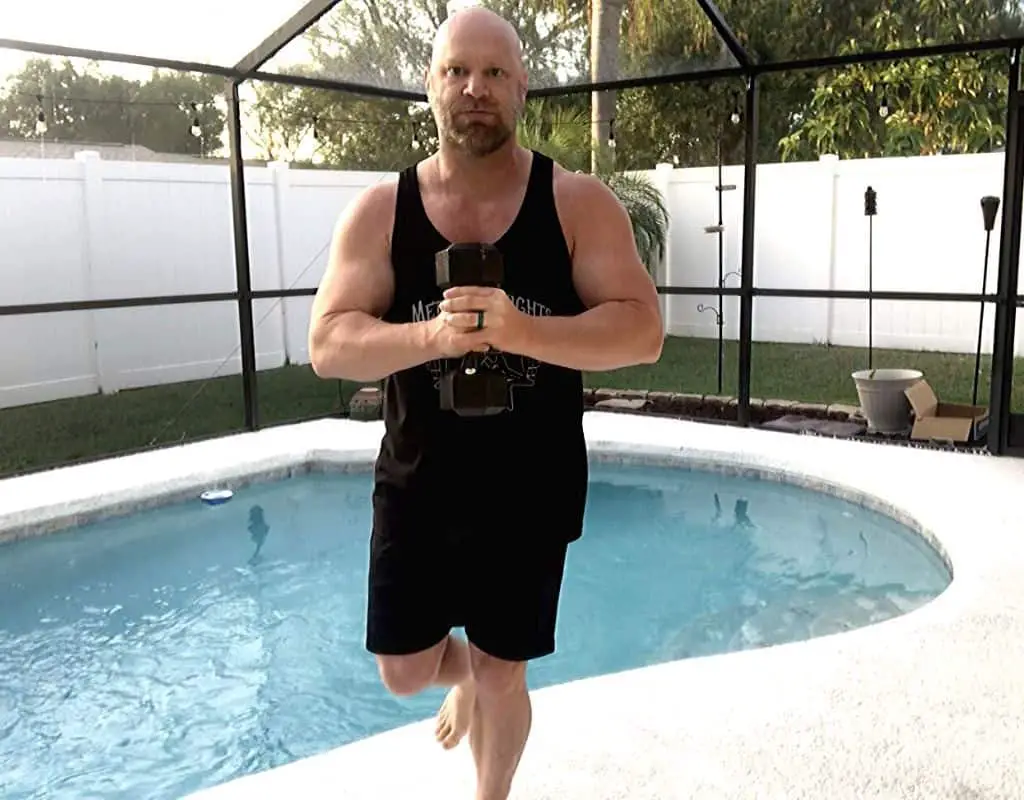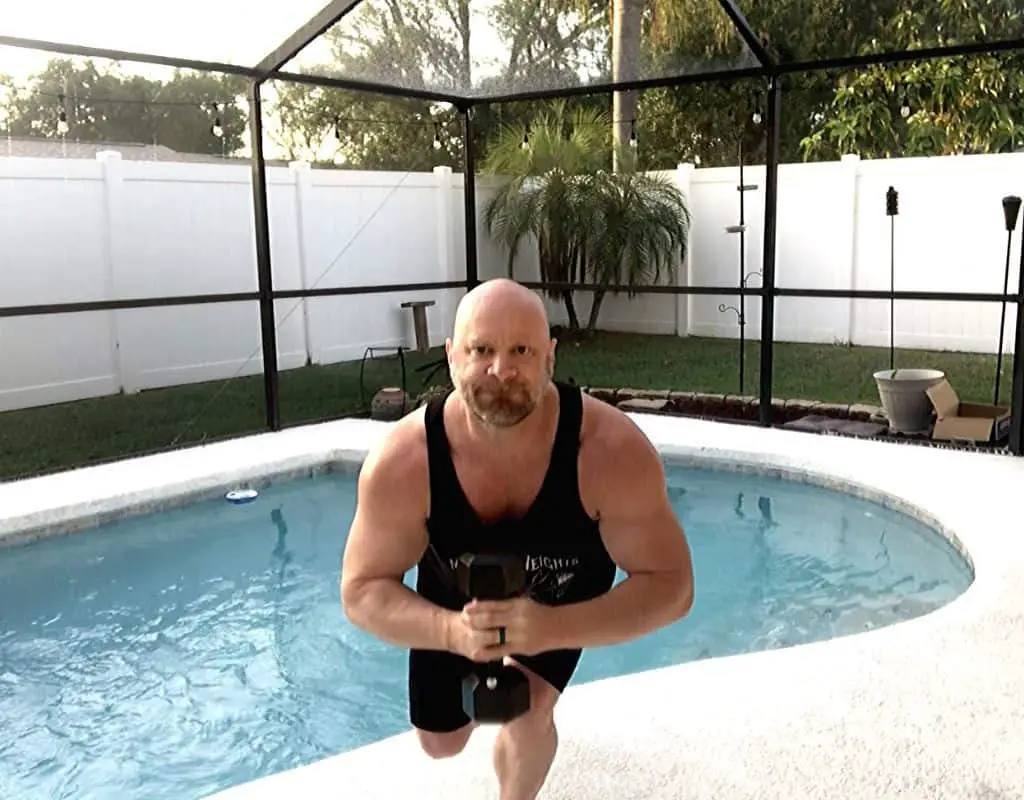No products in the cart.
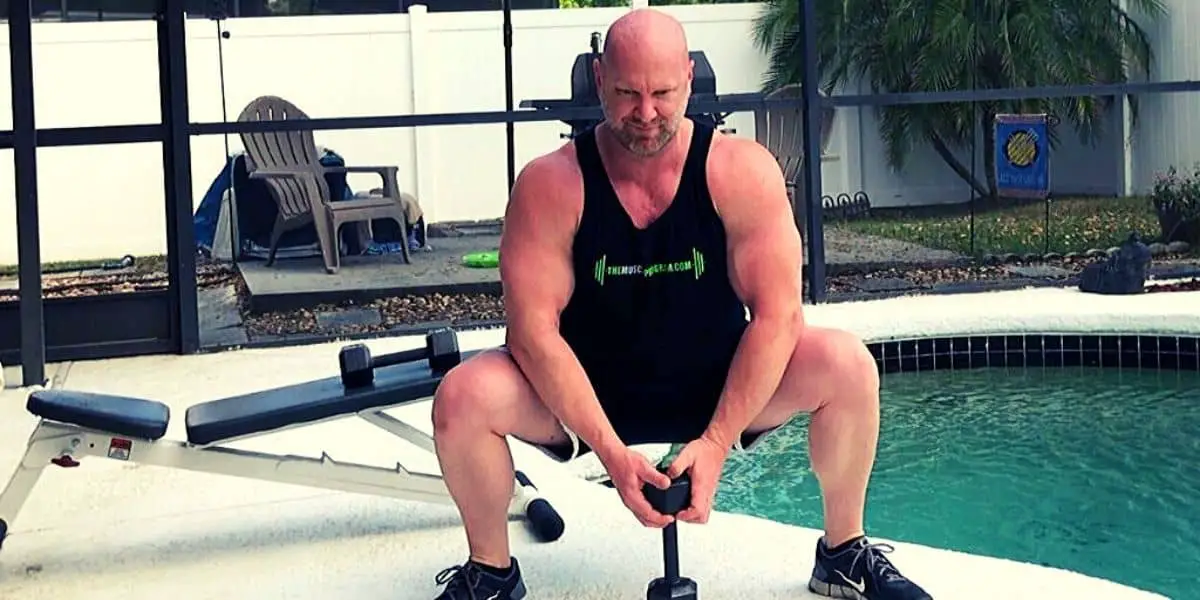
If you want to build and define your quads, you have to make sure your leg workouts are intense. You also have to do the right amount of volume for your quads to grow (I’ll explain why below).
In this post, you’re going to get a super intense quad workout that you can do at home. All you need is a pair of dumbbells, and it can even be a pair of lighter dumbbells.
This workout is going to give you the overall volume your quads need to grow by forcing you to pump out more reps.
Here’s the thing, your quads have more slow-twitch muscle fibers than other muscles. So they respond best to higher reps and volume.
Even though this is a workout you can do at home, it’s going to be tough. So go mix up your favorite pre-workout drink because you’re going to want to train your quads after reading this!
I’m writing this post during the time when we’re all under quarantine and most gyms around the world are closed.
This post is not intended to knock lifting heavy weight. Rather, it’s intended for those times when you can’t make it to the gym or your gym is closed for whatever reason.
If you already train at home, this is an awesome workout for you to try.
Your Exercises for Quads
Before we jump into the workout, let’s go over the exercises you’ll be doing for quads. These are all different types of squats, some of which you may have never tried before (so you can expect to be sore after your workout).
*If you’d like to skip ahead to the workout, click here.
- ‘Normal’ dumbbell squats
- Sumo dumbbell squats
- Front dumbbell squats
- Single-leg dumbbell squats
I’ll explain each exercise in detail below and also give you some tips on how to make these more effective for building your quads.
*The first three exercises are ones you’ll perform giant sets with. I’ll explain more when we get to the workout.
Dumbbell Squats
This movement mimics a normal barbell squat. The only difference is the weight with dumbbells is distributed a little differently. However, dumbbell squats can be just as effective as barbell squats.
Here are some tips for dumbbell squats:
- You can hold the dumbbells above your shoulders, as seen in the image, or hold each dumbbell by your side
- Make sure you have that natural curvature in the movement as you squat; dumbbells actually make this a little easier
- Keep the pressure on your heels rather than the front part of your feet; this will help prevent knee pain and injury
- Since you’re more than likely using lighter weights with dumbbells, go for a full range of motion
Sumo Dumbbell Squats
This is a type of squat that you won’t see often but it can be extremely effective at building parts of your quads that you didn’t know you had.
You’re going to target different muscles in your quads by doing sumo squats with a dumbbell.
Instead of using both dumbbells, you’ll only use one. In most cases I would say use a heavier dumbbell for sumo squats because of this. However, you can stick with lighter weights (you’ll see why when we get to the workout!).
Here how to do sumo squats:
- You’ll have a much wider stance with sumo squats than regular squats
- Point your feet outward
- Hold one dumbbell with both hands in front of you, keeping it close to your body
- As you squat down, make sure your knees are pressing outward; this will help with your balance and ensure you’re targeting certain parts of your quad muscles
Front Dumbbell Squats
This movement is very similar to regular dumbbell squats. The difference is you’re holding the dumbbells with your palms facing towards you. So the weights will naturally be held a little lower and out in front of your torso.
Front squats target your quads directly whereas regular, or normal squats put a large emphasis on your glutes as well. This makes front squats an excellent exercise to getting that tear-drop shape in your quads. And it’s a great leg toning exercise for women.
Here are some additional tips for doing front squats with dumbbells:
- Start with a slightly more narrow stance than with regular dumbbell squats
- Although your legs are closer together, make sure your knees do not fold inward; press them outward throughout the movement
- Develop that mind-to-muscle connection and focus on working your quads throughout each rep; visualize them growing and flex the at the peak of each rep
Single-Leg Dumbbell Squats
You’ll end your workout with single-leg squats with dumbbells. I’m not going to pull any punches; this is a tough exercise. And it’s going to be tougher after doing the other exercises we just went over, especially in the way you’ll be doing them.
Doing single-leg squats require 100% focus, balance, and stability. You’ll only be doing a couple of sets of these at the end of your workout for quads. But trust me, it’ll be more than enough.
Here are some ways to do single-leg squats
- You can actually do these with no weights at first to get used to the movement; you find that your body weight is enough to get the job done
- If you’re using a dumbbell, you can hold it with both hands keeping is close to our chest; this helps with balance
- As you squat with one leg, lean forward a little while kicking the other leg back behind you
- Keep the pressure on your heel throughout the movement
- Keep your core tight throughout this exercise
**I have a recent post going into more depth about these different types of squats in my post: 4 Types of Dumbbell Squats
***You can also watch the below video as I go through how to do each exercise…
Video: 4 Types of Dumbbell Squats
**In the video, you see me drinking my new favorite pre-workout before I get started.
I encourage you to read my full review by clicking the button below. I tested this pre-workout for 4 weeks before giving my thoughts…
Intense Quads Workout
This is going to be different than your typical bodybuilding workout where you do 3-4 sets of an exercise and move on to the next. Instead, the bulk of your workout is going to consist of giant sets.
What are giant sets? They’re basically supersets but with at least 3 exercises (supersets are typical going from one exercise to another, then stopping).
In this case, you’ll be combining the first three types of squats we went over for a giant set. So here’s what your set will look like…
Dumbbell squats > Sumo Dumbbell Squats > Front Dumbbell Squats
- Do 10 reps of each type of squat
- No rest between the 3 exercises
- Once you perform a giant set, rest for about a minute before starting the routine again
- You’ll do anywhere from 3-5 giant sets (start with 3 sets of giant sets and add another each week until you’re doing 5)
You’ll end your workout with just two sets of single-leg squats. Of course, since these are single-leg you’ll actually be doing a total of 4 sets.
One final note – once you finish this workout for quads, make sure you stretch. I have an entire stretching routine specific for leg training in this post: 5 Stretches You Need After Your Leg Workout
Here’s your workout…
| Exercise | Sets x Reps |
|---|---|
| Dumbbell Squats Sumo Dumbbell Squats Front Dumbbell Squats | 1 x 10 1 x 10 1 x 10 |
| *Rest 1 minute and repeat (repeat 3x) | |
| Single-Leg Squats | 2 x 10 (each leg) |
Training Quads At Home
Training your quads at home can be just as effective as going to the gym. You’ll clearly see that once you try this workout.
The key is making sure you get adequate volume. And pumping out the amount of reps with these types of exercises is going to make your workout more intense. So everything works together here.
It’s also a good idea to make sure your energy level is up and that you have what you need to stay focused during this type of workout.
The one supplement that helps me is a pre-workout called PreFIERCE.
I tested this pre-workout for 4 weeks before promoting it. I wanted to make sure it passed my sustainability test, and it did. You can read my full review here.
Excuses Don’t Build Muscle,
Jason
